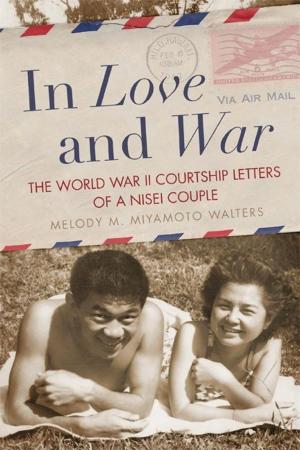Napoleon in Italy
The Sieges of Mantua, 1796–1799
Nonfiction, History, Modern, 18th Century, Military, Other, France| Author: | Phillip R. Cuccia | ISBN: | 9780806145334 |
| Publisher: | University of Oklahoma Press | Publication: | May 1, 2014 |
| Imprint: | University of Oklahoma Press | Language: | English |
| Author: | Phillip R. Cuccia |
| ISBN: | 9780806145334 |
| Publisher: | University of Oklahoma Press |
| Publication: | May 1, 2014 |
| Imprint: | University of Oklahoma Press |
| Language: | English |
In the center of Mantua, in northern Italy, a covered bridge stretches over the narrow Rio where vendors sell fish from pushcarts just as locals did more than two hundred years ago when Napoleon Bonaparte laid siege to the city. Four cannon balls protruding out of an adjacent wall offer a tacit monument to the sufferings of townspeople during the 1796–1797 siege, when the city, held by Austrian troops, finally fell under French control. Two years later, Mantua was again barraged, this time by a combined Austrian and Russian army, which took it back after four months. In Napoleon in Italy, Phillip R. Cuccia brings to light two understudied aspects of these trying periods in Mantua’s history: siege warfare and the conditions it created inside the city.
Drawing on underutilized military records in Austrian, French, and Italian archives, Cuccia delves into these important conflicts to integrate political and social issues with a campaign study. Unlike other military histories of the era, Napoleon in Italy brings to light the words of soldiers, leaders, and citizens who experienced the sieges firsthand. Cuccia also shows how the sieges had consequences long after they were over. The surrender and proposed court-martial of François-Philippe de Foissac-Latour, the French general in charge of Mantua in 1799, sheds new light on Napoleon’s disdain for defeat. Foissac-Latour faced Napoleon’s ire, expulsion from the army, and harsh public criticism.
Napoleon in Italy is not only the story of Mantua’s strategic importance. Mantua also symbolized Napoleon’s voracious determination to win and Austria’s desperation to retain its possessions. By placing the sieges of Mantua in an eighteenth-century international context, Cuccia introduces readers to a broader understanding of siege warfare and of how the global impacts the local.
In the center of Mantua, in northern Italy, a covered bridge stretches over the narrow Rio where vendors sell fish from pushcarts just as locals did more than two hundred years ago when Napoleon Bonaparte laid siege to the city. Four cannon balls protruding out of an adjacent wall offer a tacit monument to the sufferings of townspeople during the 1796–1797 siege, when the city, held by Austrian troops, finally fell under French control. Two years later, Mantua was again barraged, this time by a combined Austrian and Russian army, which took it back after four months. In Napoleon in Italy, Phillip R. Cuccia brings to light two understudied aspects of these trying periods in Mantua’s history: siege warfare and the conditions it created inside the city.
Drawing on underutilized military records in Austrian, French, and Italian archives, Cuccia delves into these important conflicts to integrate political and social issues with a campaign study. Unlike other military histories of the era, Napoleon in Italy brings to light the words of soldiers, leaders, and citizens who experienced the sieges firsthand. Cuccia also shows how the sieges had consequences long after they were over. The surrender and proposed court-martial of François-Philippe de Foissac-Latour, the French general in charge of Mantua in 1799, sheds new light on Napoleon’s disdain for defeat. Foissac-Latour faced Napoleon’s ire, expulsion from the army, and harsh public criticism.
Napoleon in Italy is not only the story of Mantua’s strategic importance. Mantua also symbolized Napoleon’s voracious determination to win and Austria’s desperation to retain its possessions. By placing the sieges of Mantua in an eighteenth-century international context, Cuccia introduces readers to a broader understanding of siege warfare and of how the global impacts the local.















